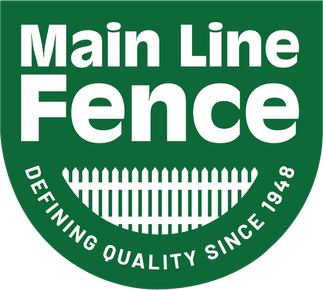Swimming Pools can provide years of enjoyment and family activity, but they can also be a danger zone for small children if not well protected.
According to the Consumer Product Safety Commission, accidental drowning is a leading cause of death among children under 5 years old. They find that many pool related accidents are avoidable with proper safeguards and supervision; a pool fence is just one of those safeguards.
On August 1st, 2008 Maine adopted a uniform building code, MUBEC—Maine Uniform Building and Energy Code. This code is modeled after the guidelines established by the ICC—International Code Council. As of December 1st, 2010 all towns are now required to enforce the MUBEC. The following is our interpretation of the 2009 ICC Codes for residential in-ground pools. There may be other codes applicable to your situations that are not listed here. Click here be for more information, including how to purchase a copy of the ICC codes.
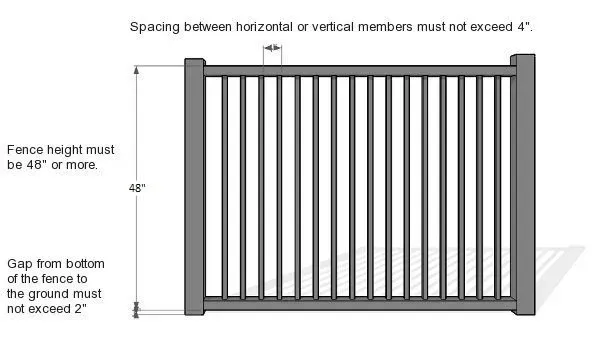
POOL FENCE REQUIREMENTS
Who does this apply to?
The following pool fence requirements, outlined in the MUBEC, apply to all outdoor swimming pools. With the exception of all portable residential spas, portable residential exercise spas and spas or hot tubs with a lockable safety cover that complies with ASTM F1346, all outdoor swimming pools are required to be surrounded by a barrier that complies with Sections 305.2.1 through 305.8.
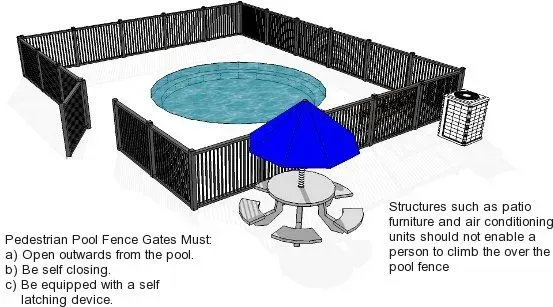
Fence height and clearance requirements:
Installed pool fences should be at least 48-inches high from finished ground level, as measured along the outside of the fence and should have no more than a two-inch gap from the bottom of the fence to the ground. The fence should block anything more than four-inches in diameter from passing through one of its openings. Any horizontal members spaced less than 45-inches apart must be placed on the pool side of the fence and the vertical spacing cannot exceed 1.75-inches.
There must be a “clear zone” no less than 36-inches around the exterior of the fence and around any permanent structures or equipment such as pumps, filters and heaters that can be used to climb over the fence. The fence or barrier must not be climbable. If made of stone or brick (i.e. a brick wall), it should not have protrusions or indentations other than normal construction tolerances and tooled masonry joints. The fence cannot be any closer than 20-inches to the pool’s edge.
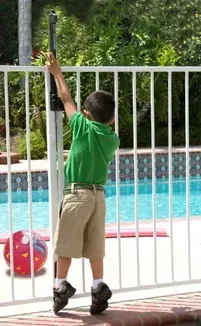
GATES & ACCESS POINTS:
Access gates must comply with the same height and clearance requirements as the rest of the fence. Pedestrian pool fence gates must be self closing, must open outwards from the pool, and must have a self latching/locking device. Utility or Service gates that are not intended for everyday or pedestrian use are not required to be self-closing but must remained locked when not in use.
Double gates or multiple gates are required to have at least one leaf secured in place and the adjacent leaf shall be secured with a self-latching device. The release mechanism of all self-latching devices must be located no less than 54 inches from grade.
Chain Link Fence: The maximum opening formed by a chain link fence shall not be more than 1.75-inches. Mesh fences, other than chain link fences, that still meet the requirements of the pool code must be installed in accordance with the manufacturer’s instructions.
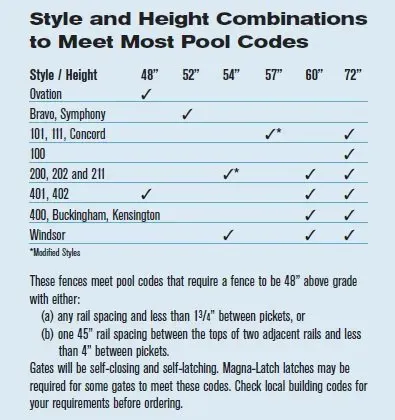
POOL FENCE MATERIALS
Code-compliant pool fences can be built from many different materials, but some are better suited to the task than others. This section provides a short overview of several types of popular pool fencing materials.
Aluminum: Aluminum is a lightweight, low-maintenance fencing material that is an excellent choice for pool fencing because of its physical attributes; it is strong and will not rust. We commonly recommend using Jerith fencing for residential aluminum pool fences. Below is a guide of their common residential styles and their code compliance.
Wood: Wood can be used to make a secure pool fence in either picket style or privacy style. Wood is relatively inexpensive when compared to aluminum, vinyl and steel fencing.
Chain Link: Chain link is an extremely affordable, low maintenance fence material. Made from galvanized steel tubing and a mesh of steel wire, chain link is strong, durable and secure. Chain link can also be an effective privacy fence with the addition of privacy slats. Chain Link fence systems are also available in a vinyl coating for a more attractive fence that fits in well with any landscape, or disappears with a wooded background.
Vinyl: Vinyl is an attractive, low-maintenance fencing material that comes in a wide variety of styles and colors. Vinyl fence eliminates the need for staining and painting, and has a long life span.
